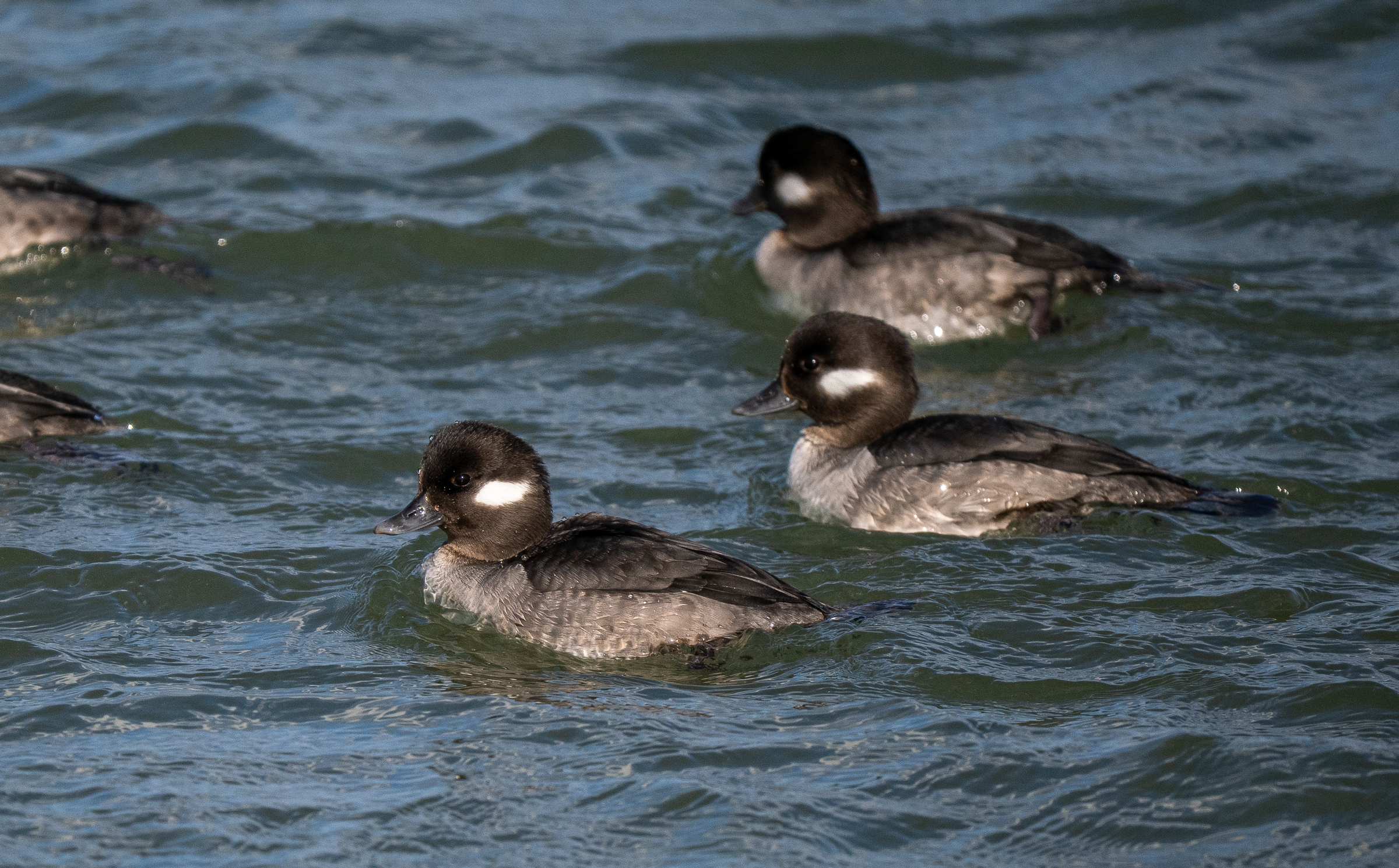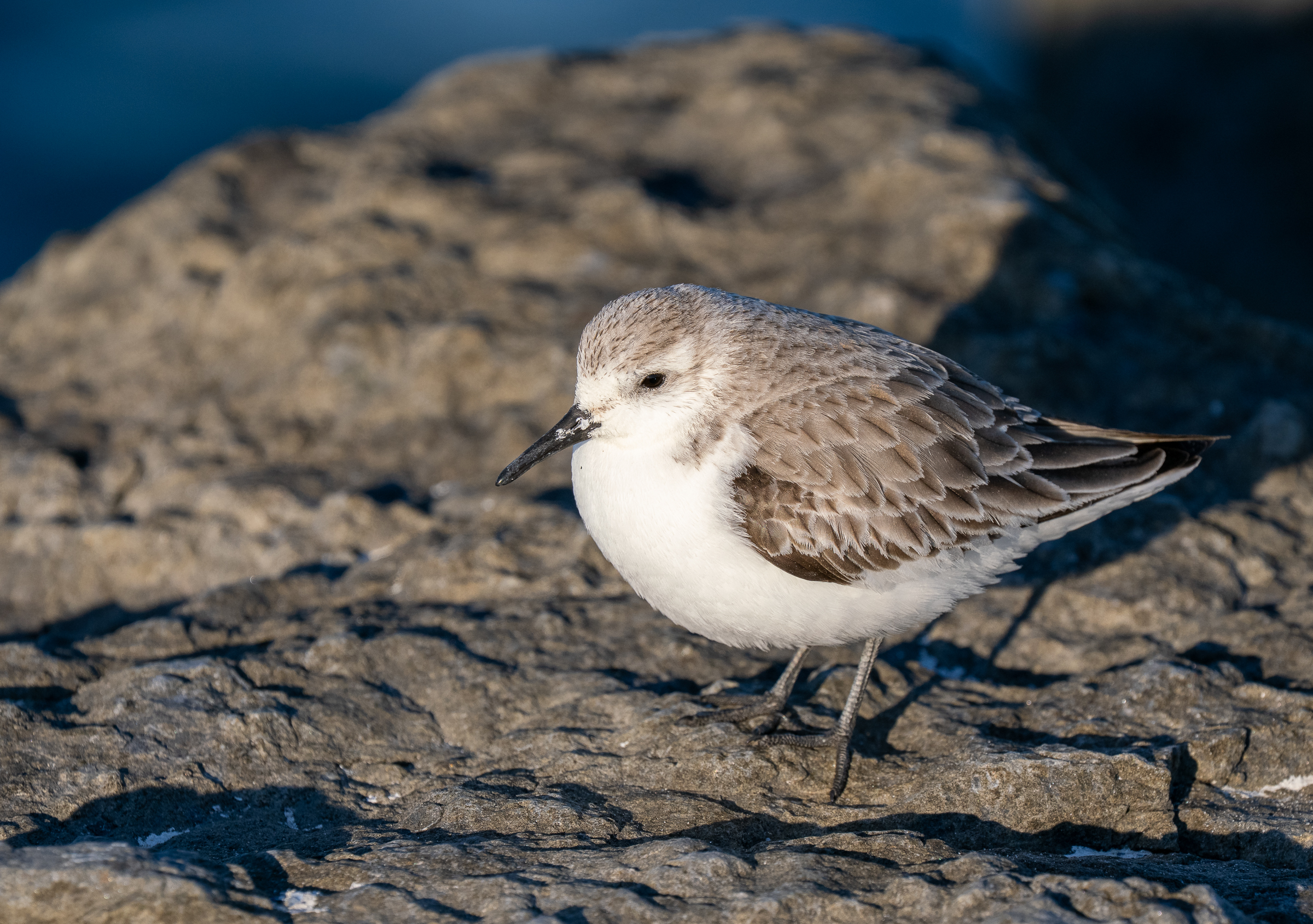Here we are almost in July and yet I'm writing about a birding trip in March... which should give you an idea of how much I've been birding so far this year. Ah well.
With the exception of our fun weekend down in Georgia in February, we did barely any out-of-DC birding over the winter. By the time early March rolled around, I realized that winter was coming to a close and we still hadn't been out to the coast to look for winter waterfowl, which obviously wouldn't do. Nikki and I decided to head out to coastal New Jersey to the Barnegat Lighthouse in what is becoming something of an annual tradition. We even managed to convince our birding friends Cassie, Vikas, and George to join in.
On March 10 the five of us piled into my car and made the drive east to the coast of New Jersey. I'm of the opinion that the barrier islands on the Atlantic Coast are one of the most underrated areas of natural beauty in the US. The landscape from DC out to the coast, however, is... not that. It was 4 hours of freeways, gas stations, urban blight, and barren farmland before we arrived in the little town of Barnegat Light. The town is a collection of kitschy shops and restaurants and identical coastal-style cottages that are mostly uninhabited in winter, giving it a rather unsettling vibe.
The Barnegat Lighthouse is a minor tourist attraction in and of itself, but the real reason we were there was the long jetty protruding from the lighthouse into the Atlantic Ocean, marking the northern tip of Long Beach Island. It doesn't look like much but for whatever reason it's home to absurd numbers of sea ducks during the winter months, including some of the coolest (and weirdest) ducks in North America. It's also unusually good for photography, making it somewhat of a pilgrimage for birders, bird photographers, and birders with cameras who don't want to call themselves photographers but still want to get good pictures (me).
I've never been disappointed by trips to Barnegat, and this one was no exception. There weren't as many shorebirds as I'd seen in previous years but the ducks were out in fantastic numbers. Better yet the sun was shining, which made for excellent photo ops in the late afternoon light and meant that it wasn't as bitterly cold as it had been last year. This was the first time for Cassie, Vikas, and George and we all had a great time marveling at the array of strange waterfowl, particularly the Harlequin Ducks that seemed unusually abundant and tame this year. Truly I don't think they make better ducks, and that color scheme and pattern are almost unmatched in the animal world.
 |
| Harlequin Duck |
Harlequin Ducks are king, but in my opinion Long-tailed Ducks aren't far behind, jockeying with Wood Duck for the title of second-best duck in North America. This late in the winter the males were transition between breeding and eclipse plumage, with some of them looking distinctly less dignified than others.
 |
| Long-tailed Duck |
Red-breasted Mergansers and Common Eiders can be a bit overshadowed by the heavy-hitters but males in crispy winter plumage are impressive in their own right. The latter in particular seemed much more abundant this winter than they had in previous visits, and it was entertaining watching them crashing around in the water like fat feathery tanks amongst the other much smaller ducks.
 |
| One of the weirdest molts I've ever seen on a Red-breasted Merganser |
 |
| Red-breasted Merganser |
 |
| Common Eider |
The other usual winter ducks were around as well, including Black Scoters, Surf Scoters, Brants, and Buffleheads. Greater Scaup were out in abundance, along with a few Lesser Scaup to make IDing more fun.
 |
| Greater Scaups |
 |
| Lesser Scaup |
 |
| Buffleheads |
 |
| Male Surf Scoter |
 |
| Female Surf Scoter |
 |
| Male Black Scoter (with a Common Eider) |
 |
| Female Black Scoters |
 |
| Brant |
 |
| Stupid numbers of sea ducks |
Ducks aside, Great Cormorants were present in much greater numbers than I'd previously seen, giving me my first decent photo ops for this species in the US. There weren't as many shorebirds as I hoped, and the Purple Sandpipers remained far out at the end of the peer although Dunlins and Sanderlings were still plentiful. American Herring Gulls, Great Black-backed Gulls, and Ring-billed Gulls were being their usual raucous selves, and the main non-bird highlight was a very cute Harbor Seal that kept popping its head up near the shore to check us out.
 |
| Great Cormorant |
 |
| American Herring Gull |
 |
| This juvenile American Herring Gull was following its parent around making high-pitched begging noises when we were walking in. We saw it again 3 hours later when we were walking out, doing the exact same thing. I'm not even a parent but I can still sympathize with the look on the adult's face. |
 |
| Sanderling |
 |
| Harbor Seal just enjoying life |
The sun was setting as we made our way back to the car. We had lunch at the aggressively Italian pizza join Andrew had introduced me to last year. It was yet another successful Barnegat trip, and somewhat of a last hurrah of winter birding before the first spring migrants started to trickle into the DC area. And, of course, it was a fun trip with great friends, great birds, and good pizza. I'm (finally) heading back to Asia in a few weeks so I'm hoping to get caught up with blog posts before then, but we'll see...
 |
| Photo (and definitely edits) by Vikas |

























































































Absolutely stunning photos! Amazing action shots, too! Warm greetings from Montreal, Canada.
ReplyDelete